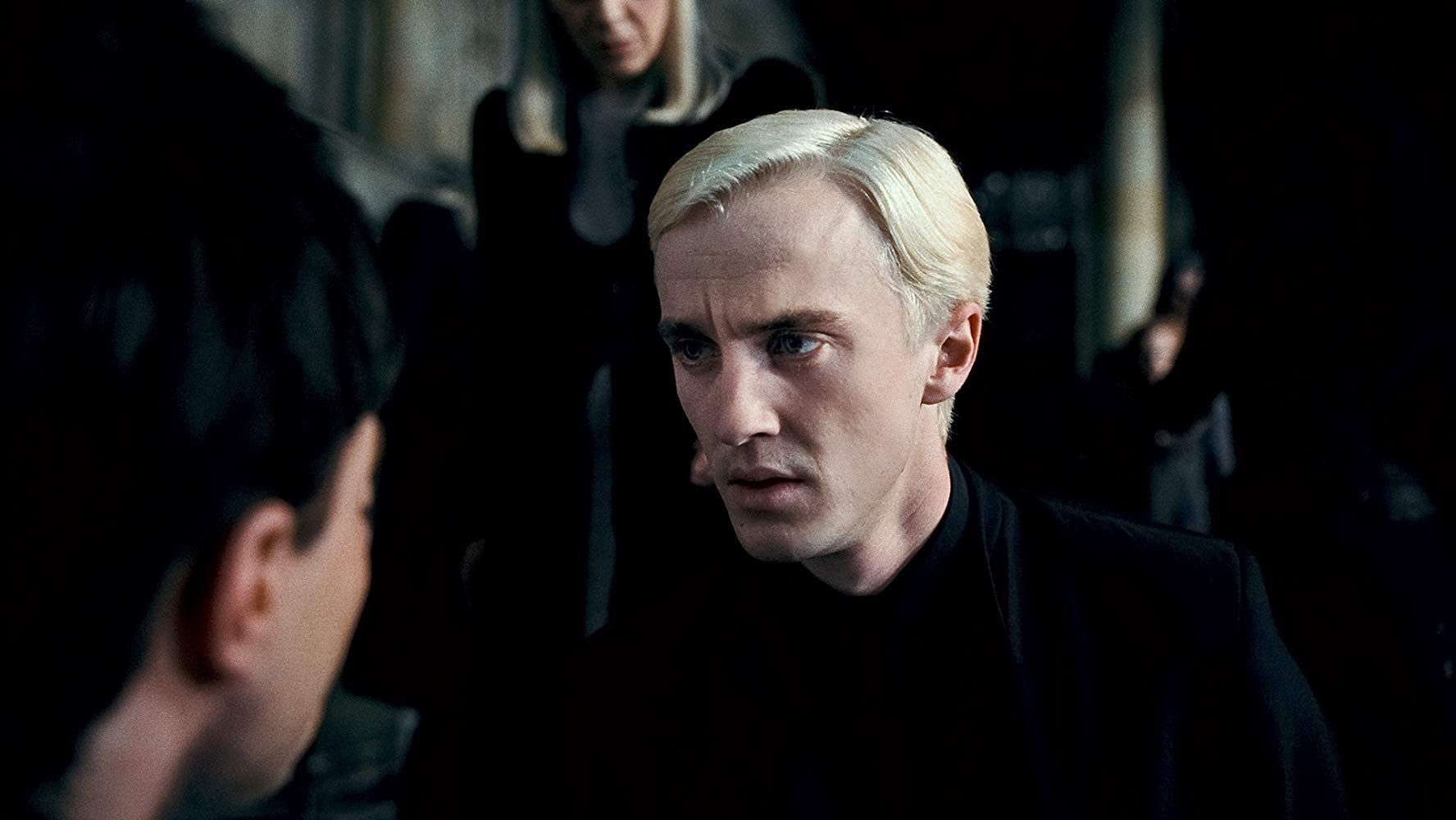Table of Contents Show
Within any Harry Potter fan group, there is always at least one person who is Draco Malfoy’s cheerleader. Many see him as the official “bad boy” of Hogwarts School of Witchcraft and Wizardry and a misunderstood young man whose parents are to blame for his attitude and cruelty. These fans jump to Draco’s defense despite J.K. Rowling having never quite redeemed his character within the initial Harry Potter series.

Draco Malfoy is a pure-blood supremacist throughout the books and only begins to have second thoughts about his involvement with the Death Eaters in the months leading up to his attempted killing of Dumbledore. If Draco had sided with Harry Potter and actively fought against Voldemort, he would have been redeemed. How does Draco Malfoy have so much support from fans without redemption? Does Draco Malfoy, a prejudiced and hurtful character, even deserve a complete redemption arc?
Draco Malfoy: Bad Boy Or Bully?
Many fans are drawn to Draco Malfoy for his supposed “bad boy” status. A “bad boy” character is often beloved by an audience due to their disdain for rules and authority. It is a confident persona that acts on their own wishes and does not adhere to social guidelines. This type of character is not inherently a bad person, just someone living outside of society’s expectations. However, characterizing Draco as a “bad boy” is inaccurate given his personality, actions, and beliefs, all of which affect his worthiness of being redeemed.
Draco is far from a rule-breaker or rebel because he does not disrespect authority or regulations when they come from a source that is on his side. When Professor Snape privileges him in and outside of class, Draco enjoys the attention, especially at Harry’s expense. Professor Umbridge, the transplant teacher from the Ministry of Magic, is another authority figure that Draco respects.
After Umbridge cancels club activity in The Order of the Phoenix, Draco approaches her to get the Slytherin Quidditch team approved for practice. She quickly agrees and Draco waves this victory all over school, flaunting his father’s connections to the Ministry as the reason for Umbridge’s speedy approval. Later in that book, Draco works under Umbridge to catch Harry and the other members of Dumbledore’s Army. (( Rowling, J.K. Harry Potter and the Order of the Phoenix. p. 361. Scholastic Inc., 2003. )) Draco is happy to play by the rules when they are enforced by someone on his side, which does not make him a rebel.
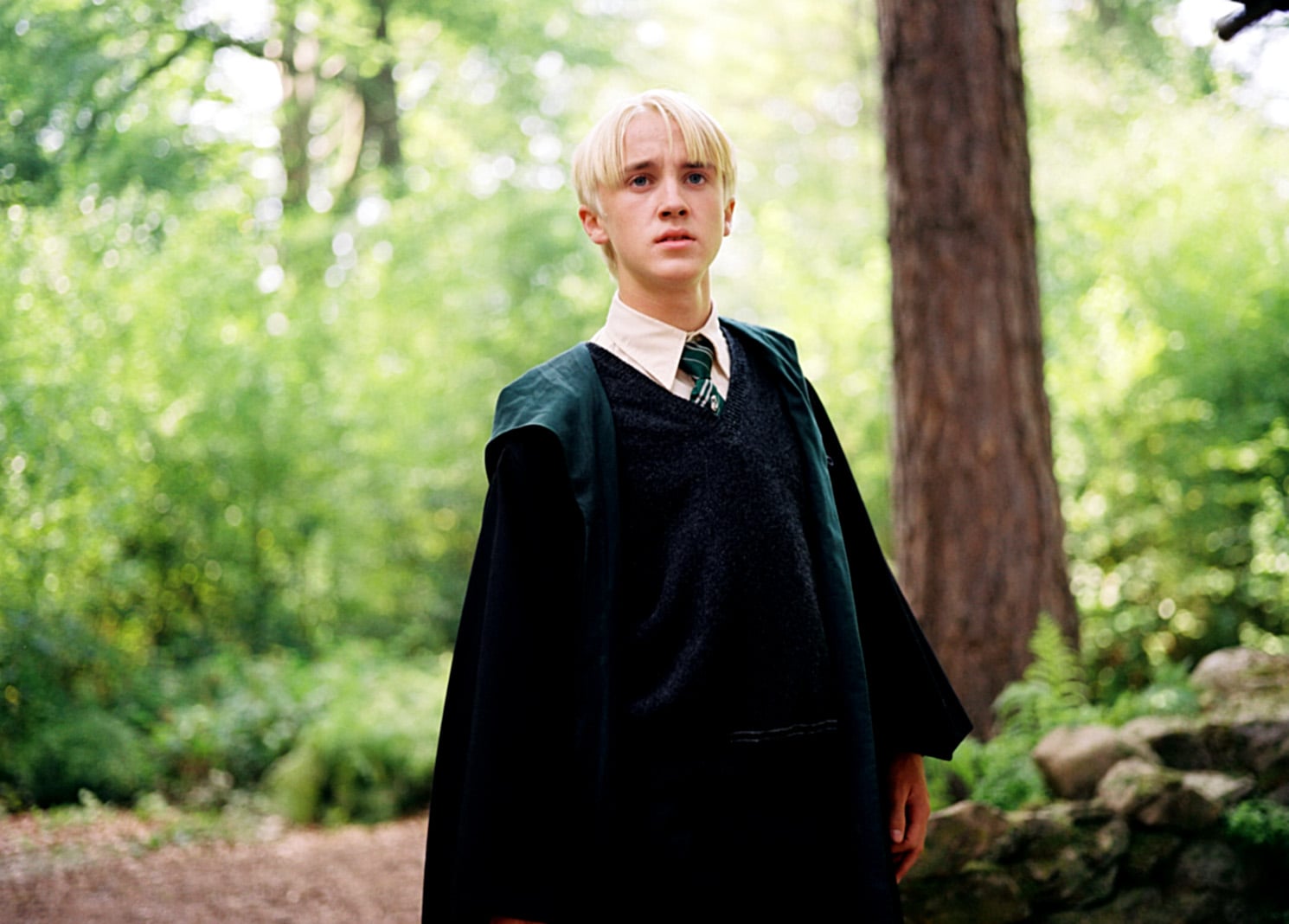
Fans may point to Draco’s uppity attitude in the Harry Potter movies as evidence of his “bad boy” status, but this is likely due to Tom Felton’s portrayal of him as more of a cocky jerk and less of the sniveling rich kid he was in the books. Draco’s swagger comes from his belief in pure-blood supremacy and from the privilege and power his father holds in the Wizarding World, not from any sort of rebellious nature.
More Brain Than Brawn
The reality of Draco Malfoy’s character differs from some fans’ perceptions. In essence, Draco partially fulfills the school bully trope by being mean, menacing, and seemingly sadistic. However, he does not possess the physicality of a classic school bully. His appearance is not described as intimidating, and he is not always a physical threat to the main characters, even as he ages. As late as The Half-Blood Prince, Draco is described as only “A teenage boy with a pale, pointed face…white-blond hair,” and light grey eyes. (( Rowling, J.K. Harry Potter and the Half-Blood Prince. p. 112. Scholastic Inc., 2005. ))
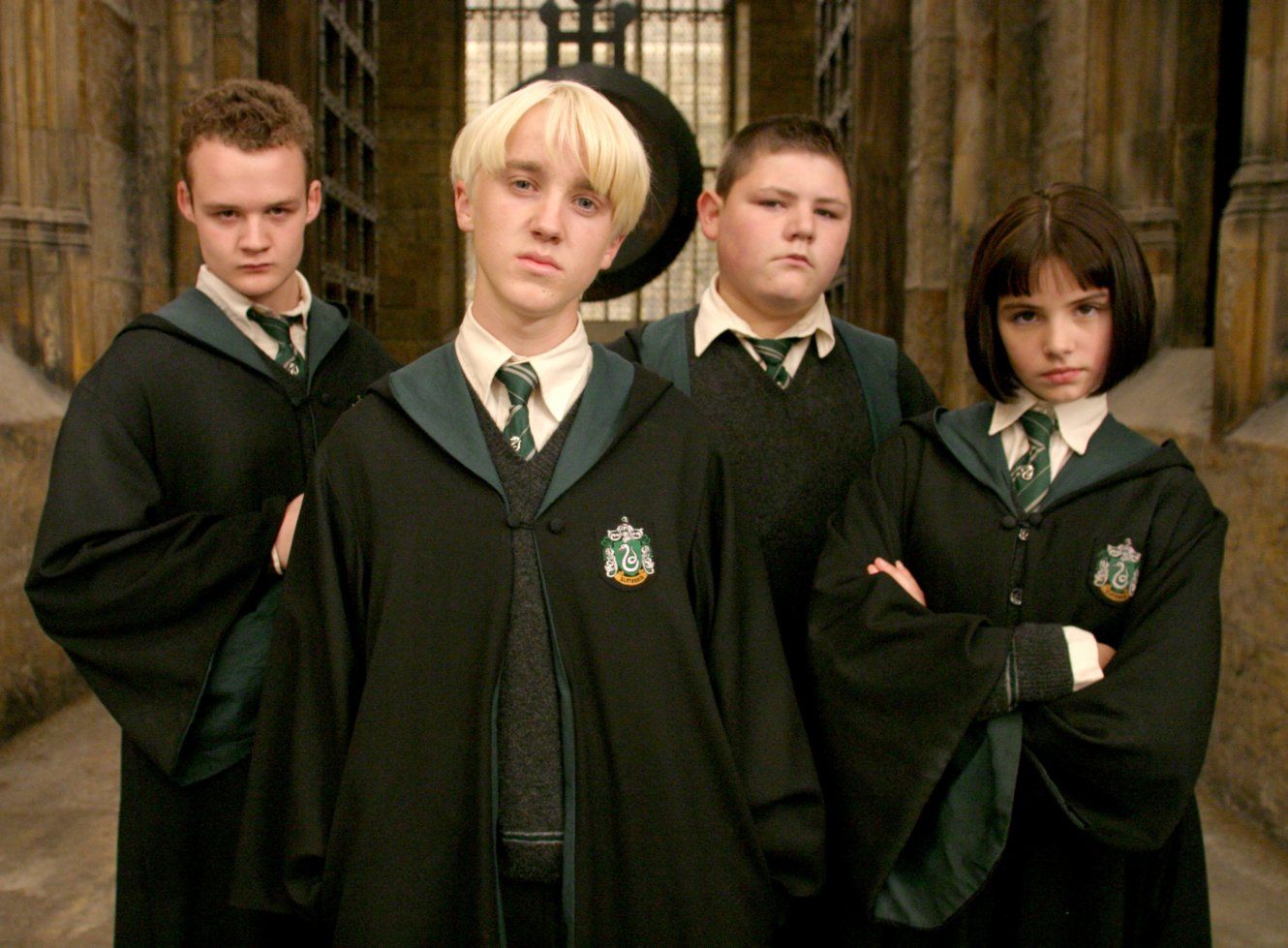
In addition, Draco rarely gets into physical fights at or outside of school. In The Order of the Phoenix, Draco taunts Harry, Fred, and George after Gryffindor beats Slytherin in a Quidditch match. When Draco intentionally provokes the three with his insults, the Gryffindor boys attack him and get punished.(( Rowling, J.K. Harry Potter and the Order of the Phoenix. p. 413. Scholastic Inc., 2003. ))
This is Draco’s usual role as a bully: hurling nasty comments and the Wizard World’s equivalent of racial slurs at others because he enjoys tormenting people and can do it without getting his hands dirty. As a prejudiced bully with the confidence only from his tainted belief in his own superiority, Draco shows that he is perhaps beyond redemption.
Draco Versus Malfoy
However, there is one important aspect of Draco Malfoy’s character that makes him redeemable: his self-conflict. During the later books of the series, Draco struggles internally with his role as a Death Eater. Without this self-conflict, Draco would have simply been shallow, evil, and undeserving of redemption. There is probably no better example of Draco’s inner struggle between morals and duty than his inability to kill Professor Dumbledore in The Half-Blood Prince. Before that fateful scene in the tower, Harry happens upon Draco in a Hogwarts bathroom:
Harry realized, with a shock so huge it seemed to root him to the spot, that Malfoy was crying—actually crying—tears streaming down his pale face into the grimy basin.
(( Rowling, J.K. Harry Potter and the Half-Blood Prince. p.522. Scholastic Inc., 2005. ))
During this rare expression of emotion from Draco, he tells Moaning Myrtle that no one can help him and that he must complete some task or he will be killed. This image of Draco is very important, as it very clearly shows his inner conflict and the toll it is taking upon him.

Later, Harry, unfortunately, finds out what Draco’s mission is. As he stands immobilized by a charm of Dumbledore’s underneath his Invisibility Cloak, Harry watches Draco threaten Dumbledore, then explains Voldemort’s plan forcing Draco to kill Dumbledore. If it is not already plain to the reader that Draco is incapable of murder, Dumbledore states it clearly:
You have been trying, with increasing desperation, to kill me all year. Forgive me, Draco, but they have been feeble attempts…So feeble, to be honest, that I wonder whether your heart has been really in it.
Albus Dumbledore to Draco Malfoy– (( Rowling, J.K. Harry Potter and the Half-Blood Prince. p. 585. Scholastic Inc., 2005. ))
Dumbledore sees that something in Draco is holding him back from committing murder. It is essential to note that Draco never refuses to kill Dumbledore, either throughout the year or in the tower. Rather, he simply cannot bring himself to do it. Draco does not want to kill Dumbledore, but he knows he must do it to protect his family and himself; Draco thus pretends that he wants to kill him to convince himself to go through with it, further displaying his internal conflict.
Draco Malfoy And The Incomplete Redemption Arc
While Rowling does provide Draco’s character with an inner battle between duty and morality, she does not fully redeem his character at the end of the series. Could she have at all? Draco Malfoy is obviously not the protagonist of the Harry Potter series, nor is he part of Harry’s circle. Because the series is in the third person (mostly limited to Harry’s point of view), and Harry and Draco are enemies, it might have been too difficult for Rowling to have included a full-bodied redemption arc for Draco.

But Rowling does focus on the characters surrounding Harry, to an extent. Severus Snape is given a redemption arc even though he and Harry spend as little time together as possible given their mutual hatred. Draco is featured in every Harry Potter book in some way, so the reader has at least a vague understanding of his actions and roles throughout the series. But once Draco has a major role to play in the fight of good vs. evil, Rowling goes more in-depth with his character and explores his complicated feelings. This is, however, the extent of Draco’s redemption arc.
Ultimately, Rowling gifts Draco Malfoy with a wife and child in the last chapter of The Deathly Hallows set nineteen years after the Battle of Hogwarts. Draco even nods to Harry, Ron, Hermione, and Ginny as he sees them and their families at platform nine and three-quarters. (( Rowling, J.K. Harry Potter and the Deathly Hallows. p. 756. Scholastic Inc., 2007. )) From this scene, it seems that Draco’s character has experienced positive growth with this change largely occurring after Voldemort is defeated.
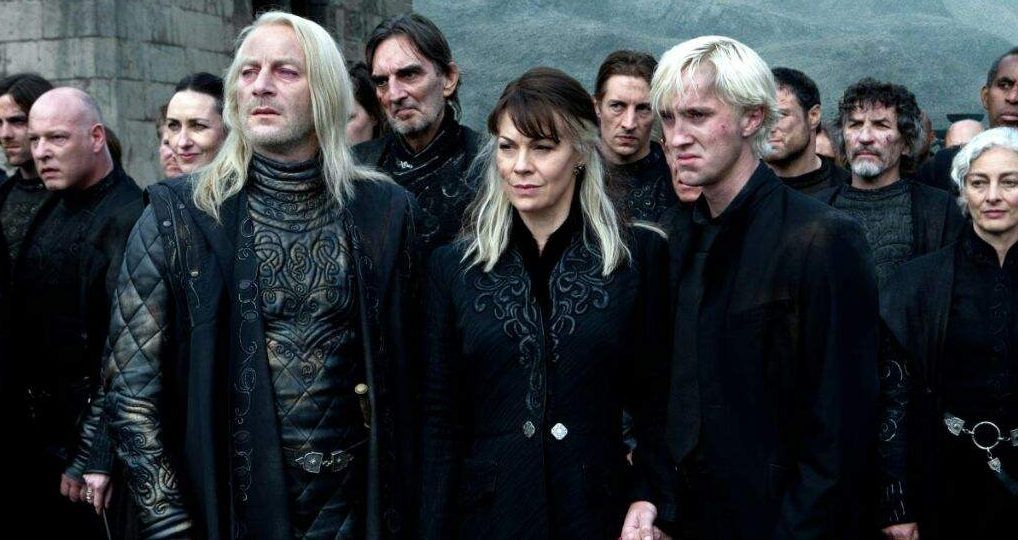
It might have been more realistic to depict his growth that way. Surely Rowling did not want to tie up the Harry Potter series in a perfect bow, and having most of Draco’s growth occur after the battle could have been part of her plan to keep some ends loose. It likely would not even have been plausible if Draco were to suddenly see the error of his ways and reject the values of his cold, but tightly connected, family. For a major redemptive event to occur, Draco may have needed to progressively show his changing colors.
What Could Have Happened
There is a crucial moment in the series that could have led to a redeemed Draco Malfoy if it had been written alongside his brewing inner conflict: Draco could have accepted Dumbledore’s offer in The Half-Blood Prince. Before Dumbledore died at the hands of Snape and before the Death Eaters joined Draco and Dumbledore in the tower, Dumbledore asks Draco to “come over to the right side” because he does not believe Draco could murder him. (( Rowling, J.K. Harry Potter and the Half-Blood Prince. p. 592. Scholastic Inc., 2005. )) He also offers Draco and his family protection, because if Draco did not kill Dumbledore, the Malfoys would be the victims of Voldemort’s deadly rage. At that moment, Draco almost accepts Dumbledore’s help.
Accepting Dumbledore’s assistance may not seem true to Draco’s character, but it could have been an entirely human, split-second decision. It would have shown not only that Draco was capable of doing the right thing, but that he was committed to protecting his family. It would not even have been too drastic too quickly, as he technically would not have switched sides, just opted for a neutral path that could have eventually propelled him in the right direction.
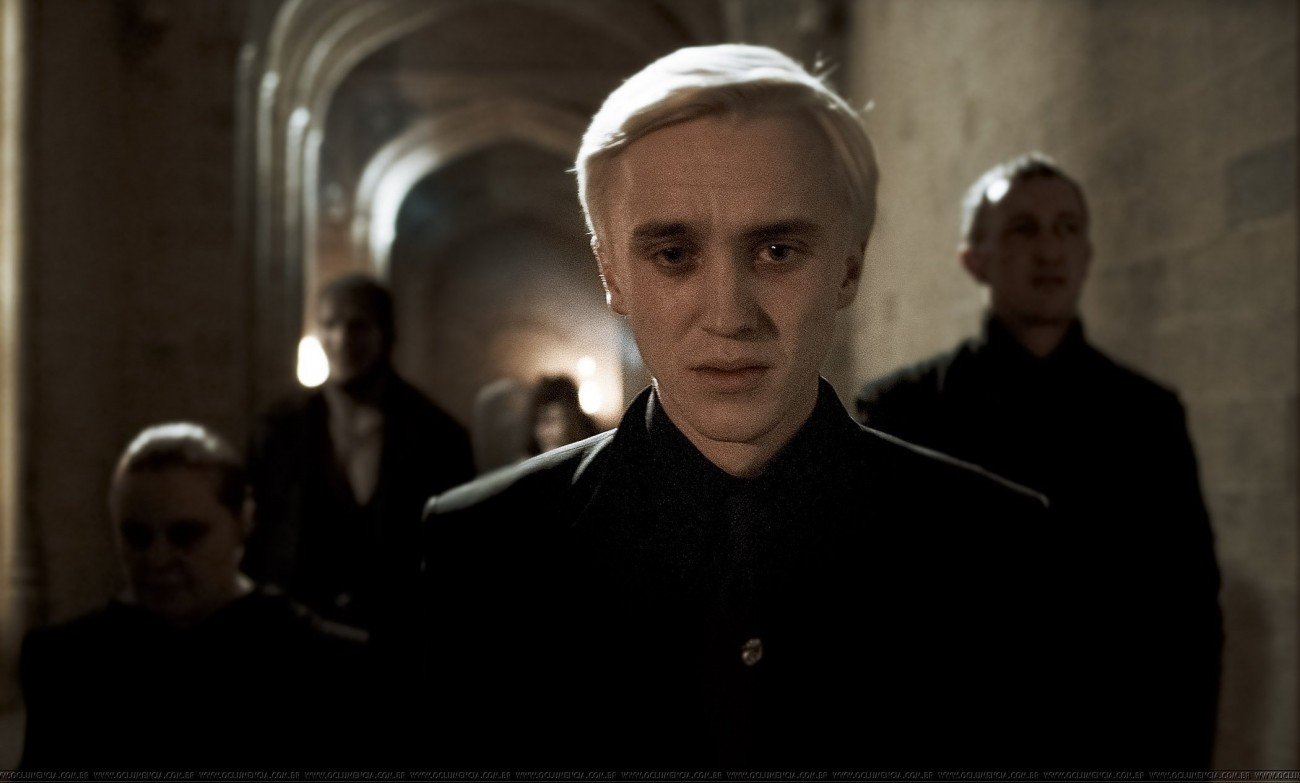
This scenario could have led to Draco fighting alongside Harry and his friends at the Battle of Hogwarts in the last book, and thus, redeeming his character completely. In fact, The Deathly Hallows: Part 2 cut a scene in which Draco denounces Voldemort and saves Harry. (( “Draco Malfoy’s Most Redeeming Scene Was Cut From Harry Potter.” Refinery29, 2017. )) Even in the Harry Potter movie franchise, Draco is never redeemed.
Redemption Is Deserved
Some fans may argue against completing Draco Malfoy’s redemption arc, maybe because they believe Draco’s character got exactly what he deserved after years of tormenting the protagonists. But it hardly seems fair of Rowling to write such an intriguing character as Draco Malfoy and leave his nearly-built redemption arc unfinished. Rowling planted the seeds of self-doubt in Draco and gave the reader reason to think that he was simply a product of his hateful environment. Draco was cruel and prejudiced because his family influenced him, which is a reason and not an excuse for his actions.
Draco’s inner conflict implies that he was misguided and has more of a conscience than he lets on. In writing this inner struggle, Rowling led fans to assume Draco would eventually help Harry or join the good side and fight with him at the Battle of Hogwarts. Therefore, fans’ frustration at his incomplete redemption arc is justified. Due to his depth of character brought upon by his internal conflict, Draco Malfoy should have been redeemed.
